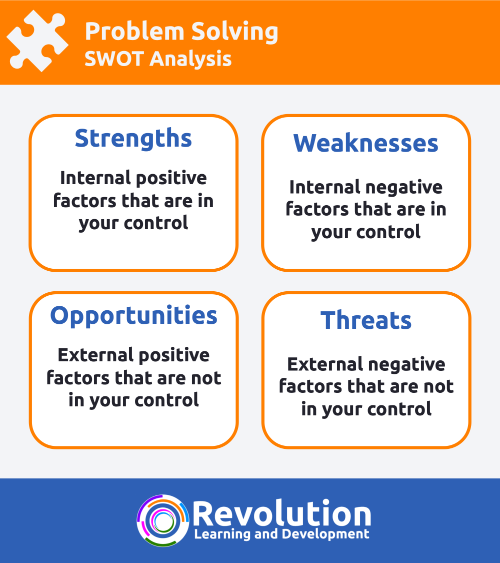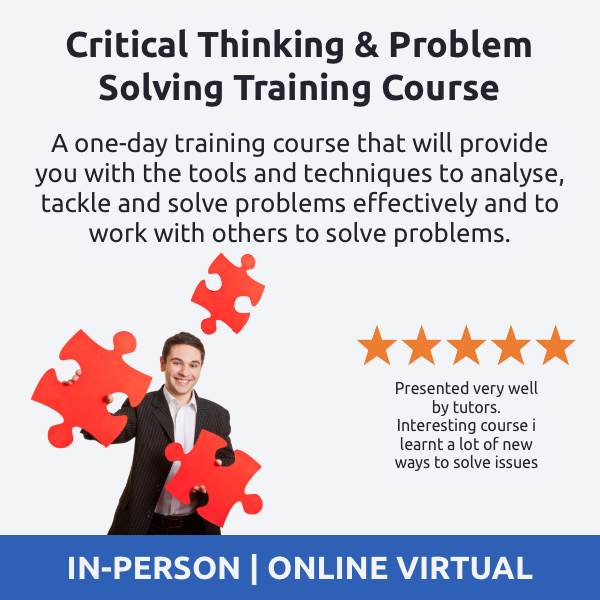What is a SWOT Analysis?
A SWOT Analysis is a tool used to analyse a business, product, service, idea or problem. In fact, a SWOT analysis can be used on anything.
A SWOT Analysis looks at both internal and external factors that can impact your business, product, idea etc. It also investigated which internal and external factors are in your control or not in your control.
Once these things have been identified, you can then begin to decide how to mitigate the negatives and harness the positives.
SWOT stands for:
- Strengths
- Weaknesses
- Opportunities
- Threats
A SWOT Analysis is a relatively simple tool and in reality, is just a list of heading with criteria. It isn’t going to helo you solve any issues or problems, it is very useful for helping you to identify what they are.
The Components of a SWOT Analysis
As mentioned above, there are 4 components to a SWOT Analysis – Strengths, Weaknesses, Opportunities and Threats.

- Strengths – Positive internal factors that you have control over. These might be the things that you are currently doing well in or areas that you are succeeding in. They could be people or skills that you have at your disposal
- Weaknesses – Negative internal factors that you have control over. These might be things that you know you are missing or could be doing better at. Maybe you are missing a particular skill-set in your business or a piece of equipment that is needed. These again could be people or skills that you need at your disposal
- Opportunities – Positive external factors that you have no control over. These might be new markets that you could break into, tenders that you can apply for, trends that are in line with your product or service or awards that you could win. Opportunities are things that you can aim for.
- Threats – Negative external factors that you have no control over. These might be new competitors, changes in legislation, global markets changing. Threats are things that you could become exposed to that may harm you, your business, product, service or project.
How to Conduct a SWOT Analysis
To conduct a SWOT Analysis, you should use the criteria above and add things relating you what you are doing the SWOT analysis against under each heading. Here are some questions and ideas about what you could look at for each:
Strengths
- What are we really good at doing?
- What is going well for us?
- Where do we do better than our competitors?
- What areas need little managing?
- What makes us unique in our marketplace?
Weaknesses
- What could be doing better at?
- What are we missing that we really need?
- What do our competitors do better than us?
- What areas need a lot of managing?
- What skills/people are we missing?
- What evidence do we have that we could be doing better?
Opportunities
- What new markets could we be looking at?
- Where is there potential for new business?
- Who is not using our services that could be?
- What awards could be looking to apply for and win
- Where do the people that could use our services hang out?
- What potential for new product/service development do we have?
- What do our competitors have that we don’t?
Threats
- What could happen in the marketplace that could do serious harm to us?
- What are we not prepared for should it happen?
- What are the influences that make our business win or fail?
- What scope is there for new competitors to emerge and take our market share?
- How prepared are we for business continuity should the worst-case scenarios occur?
What to do With a SWOT Analysis
Now that your SWOT Analysis is complete, you need to think about what to do with it. Here are some ideas about what you should do with your findings:
- Think about how you can maintain the strengths that you have. Will any of the threats you identified begin to impact them.
- Plan out how you can turn the weaknesses around. Consider what you will need and how you will address them. Formulate some clear goals, targets and objectives.
- Plan how you can harness the opportunities. How will you approach them and how will use your strengths to help you to grasp these opportunities and work toward them?
- Consider the impact of the treats. Carry out a risk assessment for each threat and try to remove the ones that can be done quickly first. Then, plan for the bigger/long terms ones and communicate these to everyone.
A Variation of the SWOT Analysis
You may also consider switching the SWOT Analysis around and using it as a TOWS Analysis. By focusing on the external elements first, you begin to understand the external influences on the thing that you are analysing. This can be useful as these are the things you may really want to focus on.
By identifying these things first, it can make it easier to identify the strengths and weaknesses – in fact, the strengths and weaknesses become more focused on what will help you to grasp the opportunities and fend off the threats.
It’s completed in exactly the same way, just in a different order to provide more clarity and focus.
Further Learning
You can learn more about SWOT Analysis and other problem-solving tools by attending a problem-solving skills training course. Take a look at our Critical Thinking and Problem-Solving Training Course for more details.




